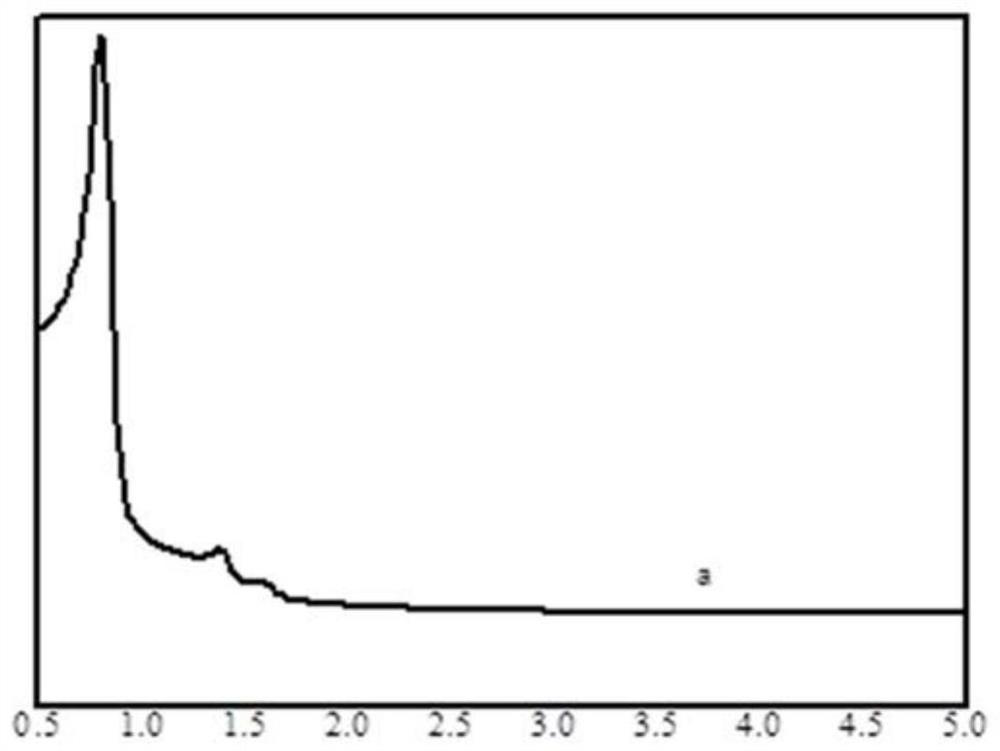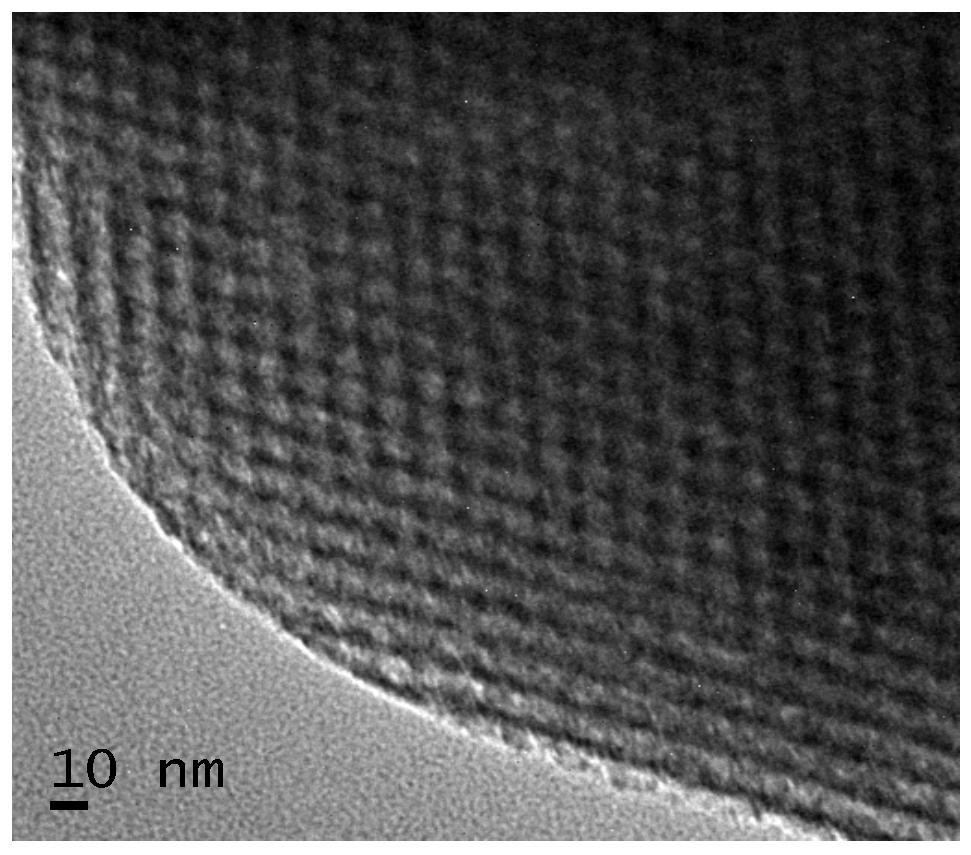Method for preparing isobutane dehydrogenation catalyst by secondary calcination ball milling method, isobutane dehydrogenation catalyst obtained by method and application
A technology of dehydrogenation catalyst and secondary calcination, applied in catalyst activation/preparation, molecular sieve catalyst, chemical instruments and methods, etc., can solve the problem of low isobutane conversion rate and so on
- Summary
- Abstract
- Description
- Claims
- Application Information
AI Technical Summary
Problems solved by technology
Method used
Image
Examples
Embodiment 1
[0070] (1) Preparation of mesoporous molecular sieve material carrier
[0071] Add 0.0007mol template agent P123 to a solution containing 37% by weight of hydrochloric acid (16.4mL) and water (128mL), stir at 40°C until P123 is completely dissolved; then add 0.042mol ethyl orthosilicate to the above solution , stirred at 40°C for 24h, then transferred the resulting solution to a polytetrafluoroethylene-lined reactor, crystallized at 150°C for 20h, then filtered and washed 4 times with deionized water, and then pumped Filter and dry to obtain the raw powder of the mesoporous material; wash the raw powder of the mesoporous material with ethanol under reflux conditions for 24 hours to remove the template agent and obtain the mesoporous molecular sieve material A1.
[0072] Then put the mesoporous molecular sieve material A1 from which the template agent has been removed into a muffle furnace, and pass nitrogen gas into it, and raise the temperature to the terminal temperature at ...
Embodiment 2-4
[0086] Change the preparation process of the mesoporous molecular sieve material carrier in embodiment 1 and the consumption of each raw material in the preparation process of the isobutane dehydrogenation catalyst and change the heat activation treatment process parameter and the ball milling condition parameter, carry out embodiment 2-4, obtain respectively Mesoporous molecular sieve materials A2-A4, mesoporous molecular sieve material carriers C2-C4, and isobutane dehydrogenation catalysts Cat-2-Cat-4.
[0087] Table 1 lists the amount of each component used in the preparation process of the mesoporous molecular sieve material carrier and the pore structure parameters of the mesoporous molecular sieve materials A2-A4.
[0088] Table 2 lists the thermal activation process parameters (including the first heating start temperature, the first heating rate, the first heating end temperature, the second heating start temperature, the second heating rate and the second heating end...
PUM
| Property | Measurement | Unit |
|---|---|---|
| Average particle diameter | aaaaa | aaaaa |
Abstract
Description
Claims
Application Information
 Login to View More
Login to View More - R&D
- Intellectual Property
- Life Sciences
- Materials
- Tech Scout
- Unparalleled Data Quality
- Higher Quality Content
- 60% Fewer Hallucinations
Browse by: Latest US Patents, China's latest patents, Technical Efficacy Thesaurus, Application Domain, Technology Topic, Popular Technical Reports.
© 2025 PatSnap. All rights reserved.Legal|Privacy policy|Modern Slavery Act Transparency Statement|Sitemap|About US| Contact US: help@patsnap.com



